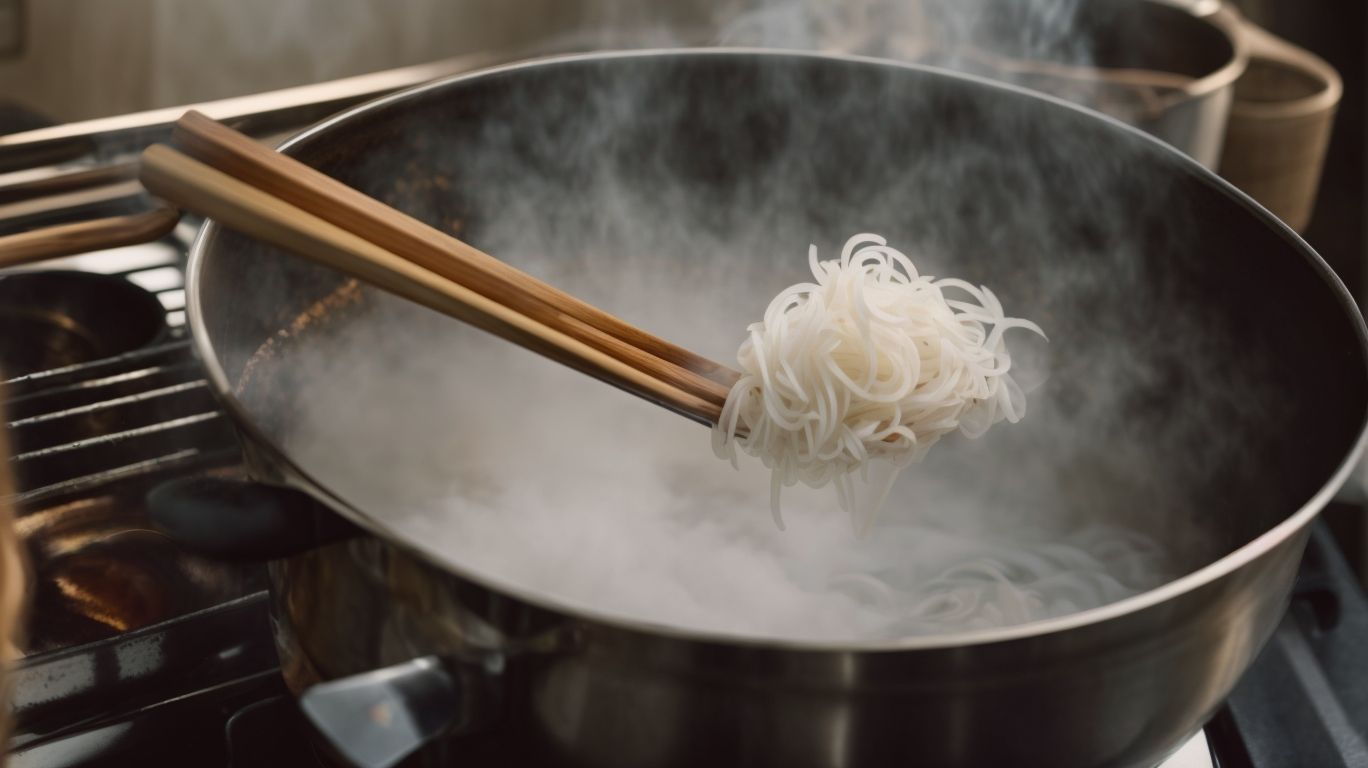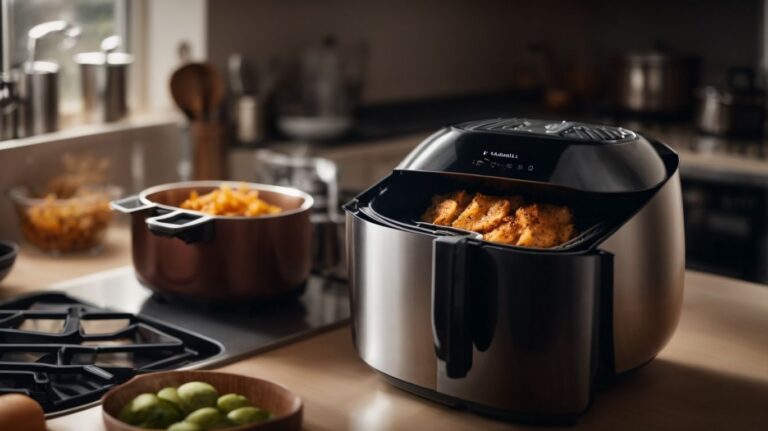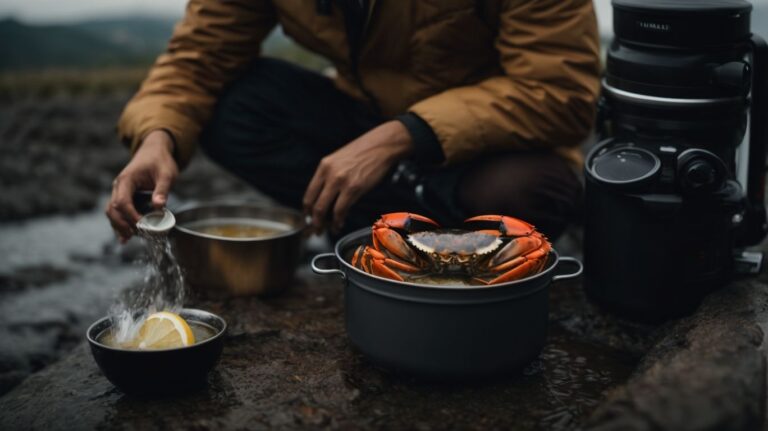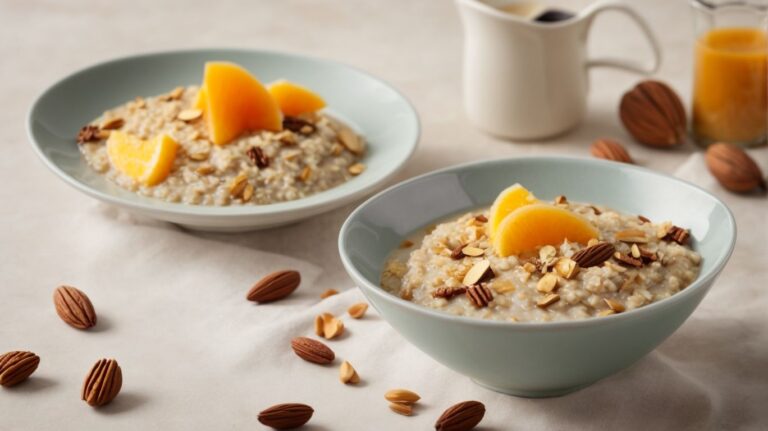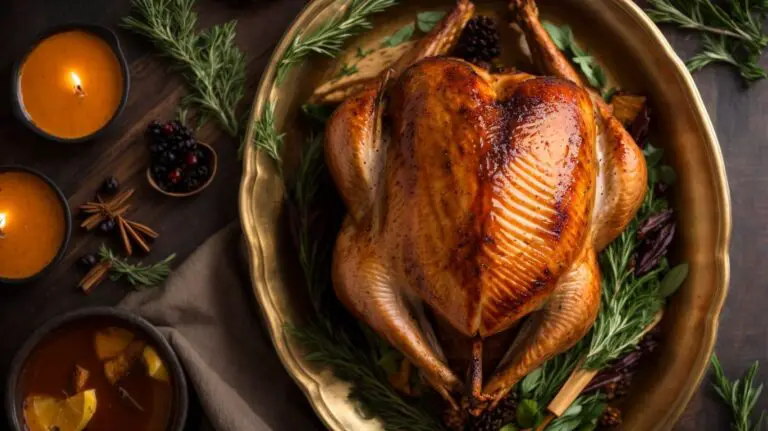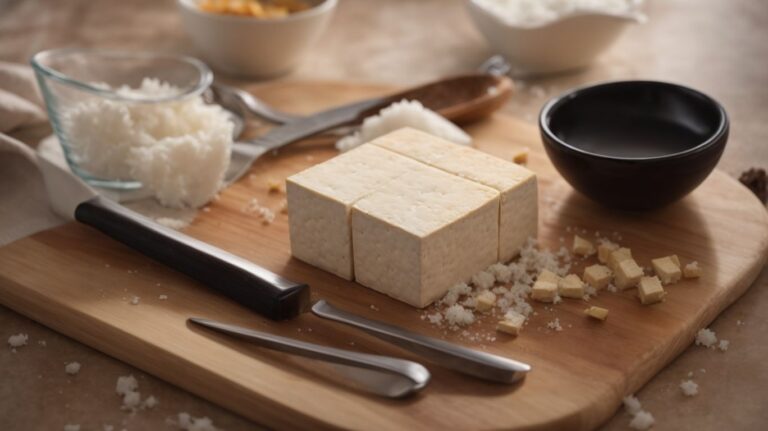How to Cook Rice Noodles for Pad Thai?
Are you a fan of Pad Thai but struggle with getting the rice noodles just right?
We will explore everything you need to know about cooking rice noodles for Pad Thai. From the different types of rice noodles to the best way to soak and cook them, we’ve got you covered.
We will also delve into making the perfect Pad Thai sauce, preparing the vegetables and protein, and assembling and cooking the dish.
Stay tuned for tips and tricks for perfect Pad Thai every time!
Key Takeaways:
What are Rice Noodles?
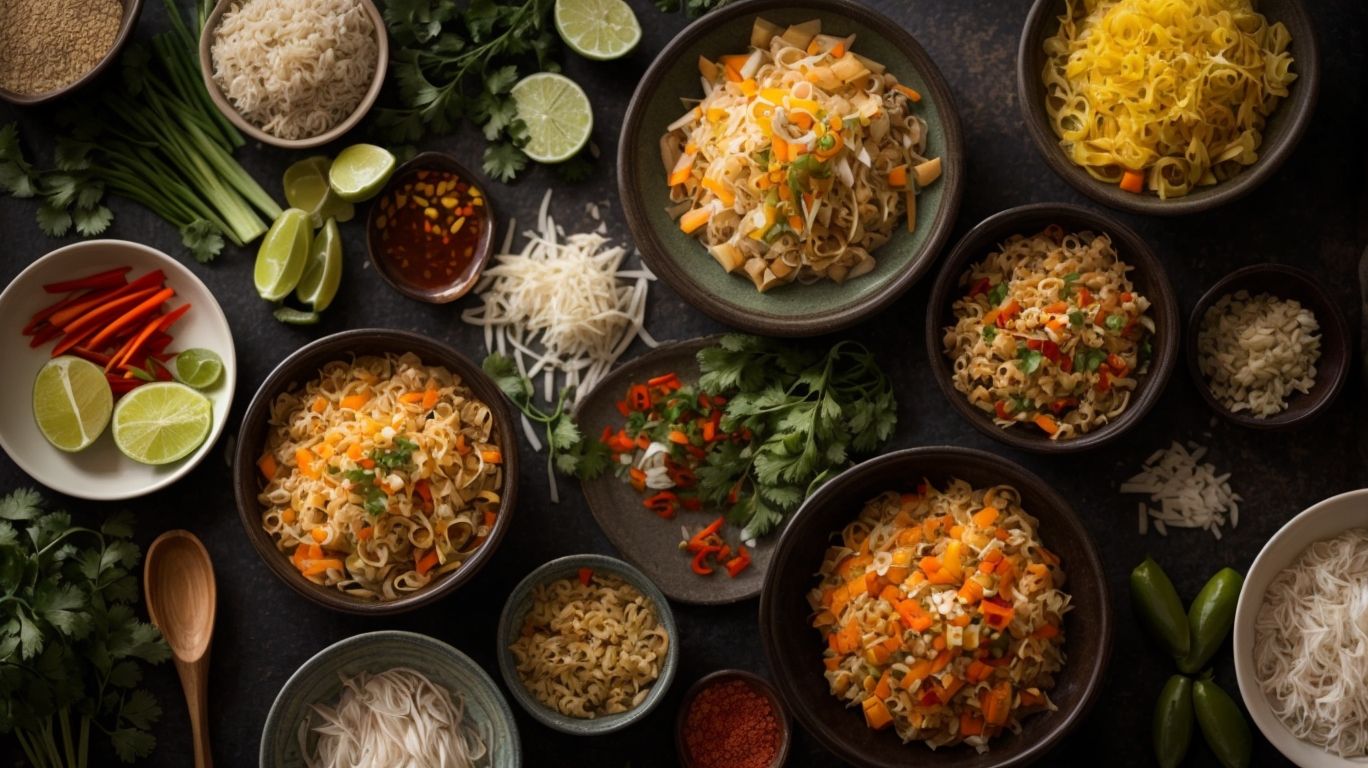
Credits: Poormet.Com – Andrew Lee
Rice noodles are a staple in Asian cuisine, offering a versatile and gluten-free alternative to wheat-based noodles.
Originating in Southeast Asia, rice noodles have a long history dating back to ancient times. They are made from rice flour and water, which gives them their distinctive chewy texture. There are various types of rice noodles, such as thin vermicelli for dishes like pad thai or wider noodles for hearty stir-fries.
When cooking rice noodles, it is essential to follow the instructions on the package to ensure they are cooked to the right consistency. They can be boiled or soaked in hot water until tender, making them a quick and easy addition to any dish.
Popular dishes that feature rice noodles include pho, a Vietnamese noodle soup, and chow fun, a Chinese dish made with stir-fried wide rice noodles. These dishes showcase the versatility and deliciousness of rice noodles in Asian cuisine.
What are the Different Types of Rice Noodles?
Rice noodles come in various forms such as pad thai noodles, vermicelli, and thicker versions suitable for stir-fries and soups.
Fresh rice noodles, also known as ho fun, are wide and flat, creating a smooth and chewy texture when cooked. These noodles are commonly used in dishes like Beef Chow Fun and Singapore Noodles.
On the other hand, rice vermicelli are thin and delicate, ideal for dishes like Bun Cha and Pho. They absorb flavors well, making them perfect for soups and salads.
The chewy thick rice noodles are great for dishes such as Pad See Ew and Drunken Noodles, adding a hearty and satisfying element to the dish.
How to Prepare Rice Noodles for Pad Thai?
Preparing rice noodles for Pad Thai involves soaking them in room temperature water until they reach a pliable texture ideal for stir-frying.
Once the noodles have softened, drain them thoroughly to remove excess water, which could dilute the flavors of your dish. Be mindful of the soaking time; over-soaked noodles can become mushy and lose their desired chewiness.
For a noodle salad, you may want to slightly under-soak them for a firmer bite, while for a noodle soup, a longer soak will give you a softer texture. Remember that the soaking process sets the foundation for the overall quality of your Pad Thai, so give this step the attention it deserves.
What is the Best Way to Soak Rice Noodles?
Soaking rice noodles in lukewarm water for about 15-20 minutes is the best method to achieve the right texture for stir-frying or adding to soups.
This step is crucial as it helps the noodles hydrate properly, softening them just enough to be pliable without becoming mushy. Lukewarm water, usually around 80-90°F, is ideal as it kickstarts the rehydration process without cooking the noodles prematurely. The soaking time is equally essential; too short and the noodles may remain too firm, while too long can make them slimy. The starchy residue released during soaking aids in providing that sought-after chewiness in the final dish.
How to Cook Rice Noodles for Pad Thai?
Cooking rice noodles for Pad Thai involves stir-frying them with a mix of Asian-inspired ingredients to create a flavorful and aromatic dish.
When preparing Pad Thai, it’s essential to start by soaking the fresh noodles in warm water until they are pliable but not overly soft. Once drained, these noodles will be the foundation of your dish, soaking up all the delightful flavors of the broth and seasonings during cooking.
To achieve that perfect balance of sweet, sour, salty, and spicy flavors that define Pad Thai, a harmonious blend of tamarind paste, fish sauce, lime juice, and brown sugar is usually added during the stir-frying process. It’s this medley of tastes that makes Pad Thai so beloved and appealing to a wide range of palates.
While traditional Pad Thai typically includes ingredients like tofu, shrimp, or chicken, regional variations often showcase unique combinations such as banana flowers, palm sugar, or even pickled turnips, adding distinct twists to this beloved noodle dish.
What is the Perfect Cooking Time for Rice Noodles?
The perfect cooking time for rice noodles varies based on their size and thickness, typically ranging from 3 to 7 minutes for noodles used in soups or stir-fries.
Factors such as the type of noodle, whether they are wide noodles or thin vermicelli, can also impact the cooking time. For those who prefer al dente noodles, cooking the rice noodles for a shorter amount of time will retain a firmer texture. Conversely, if you enjoy softer noodles, adjusting the cooking time by a couple of minutes can achieve the desired consistency.
How to Make Pad Thai Sauce?
Creating the perfect Pad Thai sauce involves blending a harmonious mix of sweet, sour, and savory ingredients to elevate the flavors of the dish.
One crucial component in crafting this iconic sauce is the balance between tamarind paste for a tangy kick and palm sugar for sweetness.
- The marriage of these two elements forms the base, complemented by fish sauce for umami depth.
- Adding heat to the sauce can be achieved through a touch of red chili flakes or fresh chilies, depending on your spice preference.
What are the Essential Ingredients for Pad Thai Sauce?
The essential ingredients for Pad Thai sauce include tamarind paste, fish sauce, palm sugar, and a balanced ratio of sweet, sour, and salty components.
To create an authentic Pad Thai sauce, it’s crucial to pay attention to the quality and proportion of these key components. When building the sauce, using a high-quality tamarind paste will ensure the perfect level of tanginess, while fish sauce contributes that essential umami depth.
Regarding palm sugar, opting for the real deal over substitutes is a game-changer. The sweetness it imparts is unparalleled, elevating the complexity of the sauce.
A balance of sweetness from palm sugar, acidity from the tamarind, and saltiness from the fish sauce is what makes the foundation of a flavorful Pad Thai sauce. Finding the right proportions and adjusting to taste is key.
What is the Ratio of Ingredients for Pad Thai Sauce?
The optimal ratio of ingredients for Pad Thai sauce is typically 2 parts tamarind paste to 2 parts fish sauce and 3 parts palm sugar, adjusted to personal taste preferences.
When creating this iconic Thai dish, it is crucial to strike a balance between the tangy, savory, and sweet components of the sauce. Achieving the perfect harmony can elevate your Pad Thai to culinary excellence. Customizing these ratios allows you to tailor the sauce to your unique palate; some may prefer a sweeter version with more palm sugar, while others may opt for a tangier profile by increasing the tamarind paste. Experimenting with these proportions is key to finding your perfect Pad Thai recipe.
How to Prepare the Vegetables and Protein for Pad Thai?
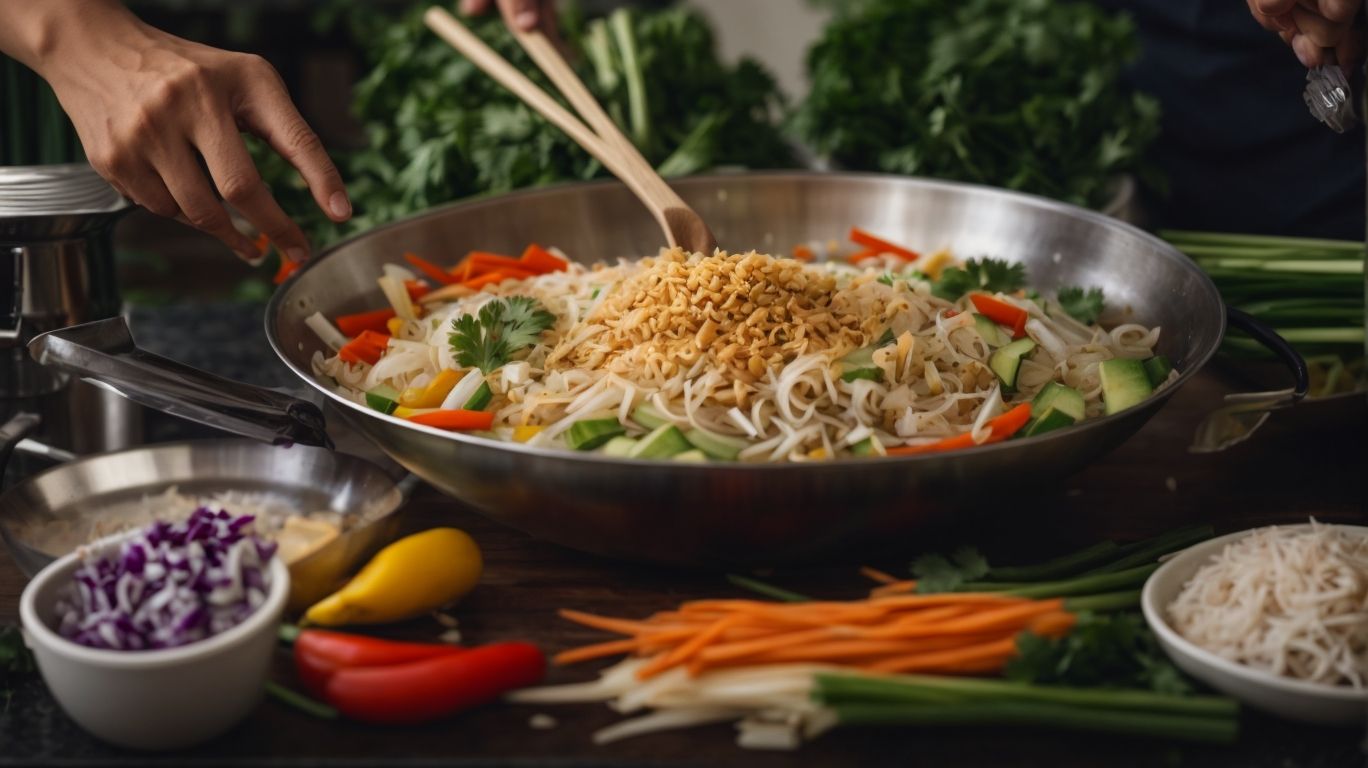
Credits: Poormet.Com – Timothy Thomas
Preparing vegetables and protein for Pad Thai involves slicing fresh produce and marinating proteins in flavorful sauces to enhance the overall dish.
For vegetables, classic choices include bell peppers, bean sprouts, carrots, and scallions, providing a colorful and crunchy contrast to the noodles. You can also add spinach or baby corn for variation in taste and texture. To marinate proteins like chicken, shrimp, or tofu, soy sauce, garlic, and ginger create a harmonious blend of flavors. Stir-frying the proteins at high heat ensures a crispy exterior while maintaining tenderness. These careful preparations guarantee that every bite of your Pad Thai is a wholesome and satisfying experience.
What Vegetables are Best for Pad Thai?
The best vegetables for Pad Thai include bean sprouts, carrots, bell peppers, and scallions, adding crunch, color, and a variety of textures to the dish.
Bean sprouts bring a delightful crispiness, while carrots contribute a hint of sweetness and a vibrant orange hue to the overall presentation. Bell peppers offer a nice balance of sweetness and tang, enhancing the flavor profile of the dish, and scallions provide a subtle oniony aroma that ties all the flavors together.
What Protein Options Can Be Used in Pad Thai?
Protein options for Pad Thai range from tofu and shrimp to chicken and beef, offering diverse choices for both vegetarian and meat-loving preferences.
Regarding preparing tofu for Pad Thai, marinating it in a mix of soy sauce, ginger, and garlic before pan-frying can add a depth of flavor that complements the dish’s traditional seasonings. Shrimp, on the other hand, can be quickly sautéed with garlic and sesame oil to retain its natural sweetness. Chicken and beef require similar stir-frying techniques, with chicken benefiting from a soy sauce and honey glaze, whereas beef can be marinated in a blend of oyster sauce and rice vinegar for a savory kick.
Pairing these proteins with the right combination of vegetables like bean sprouts, bell peppers, and scallions can enhance the overall texture and flavor profile of your Pad Thai. Quick-cooking proteins like shrimp and thinly sliced beef can be added towards the end of the cooking process to prevent overcooking, while heartier options like chicken and tofu should be cooked first to ensure they are thoroughly heated. When creating the sauce for your Pad Thai, incorporating ingredients like tamarind paste, fish sauce, and palm sugar can elevate the dish’s umami notes and complement the chosen protein beautifully.
How to Assemble and Cook Pad Thai?
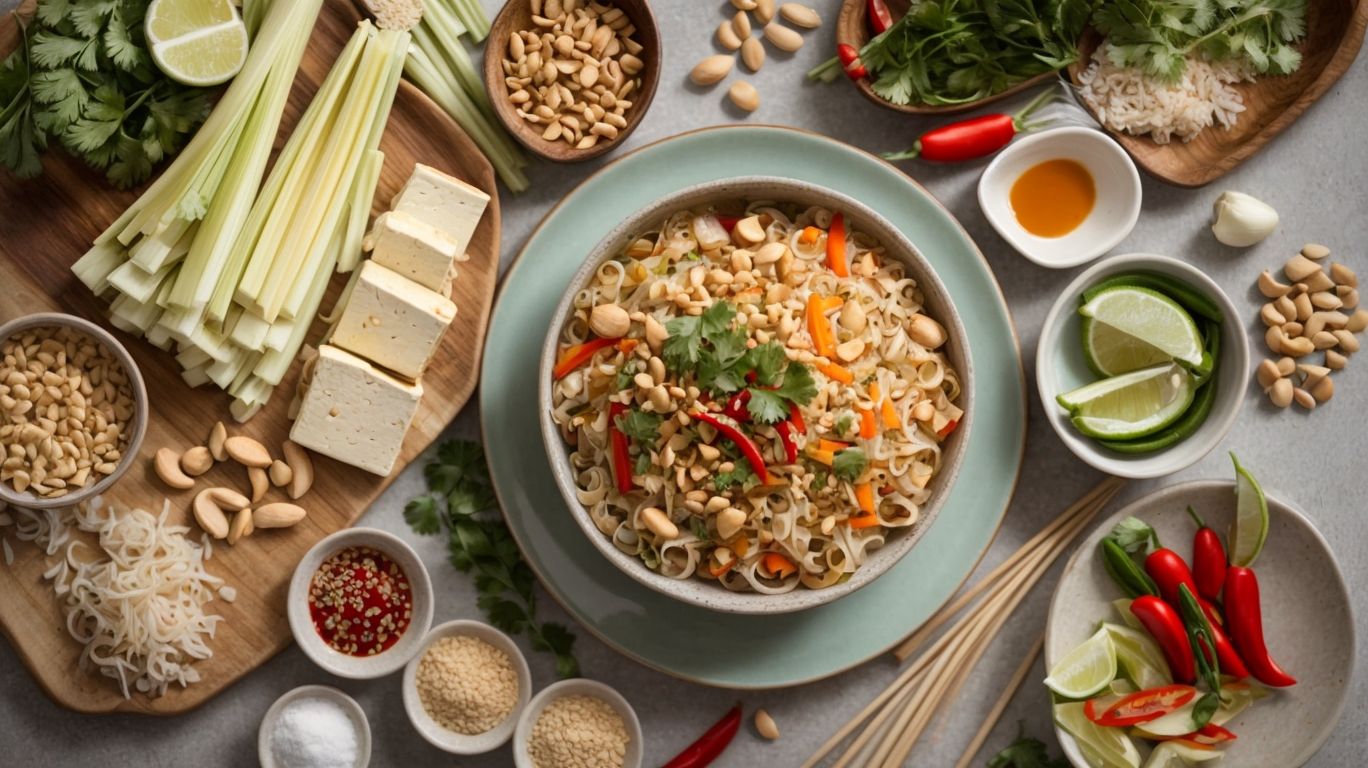
Credits: Poormet.Com – Lawrence Jones
Assembling and cooking Pad Thai involves stir-frying the noodles, vegetables, protein, and sauce together in a hot pan to create a harmonious and flavorful dish.
Start by preparing the essential ingredients such as rice noodles, garlic, shallots, tofu or shrimp, bean sprouts, eggs, and crushed peanuts for that authentic Pad Thai taste.
Next, soak the rice noodles in warm water until they are pliable but still slightly firm to the touch, ensuring the desired chewy noodle texture.
Once all ingredients are ready, the key is to quickly cook them in a hot wok or pan, maintaining the right balance of heat to sear the protein and keep the vegetables crisp.
What is the Best Cooking Method for Pad Thai?
The best cooking method for Pad Thai is stir-frying in a hot pan, ensuring that the ingredients are evenly cooked and infused with the signature flavors of the dish.
When preparing Pad Thai, start by heating your pan over high heat with an oil that can withstand high temperatures like peanut or vegetable oil. Once the pan is hot, add in the wide noodles, followed by protein such as chicken, shrimp, or tofu. Ensure that the protein is cooked through before incorporating other ingredients like eggs, garlic, shallots, and noodle salad vegetables.
Keep the heat high throughout the cooking process to achieve that desirable wok hei flavor, which comes from stir-frying at high heat. Toss the ingredients constantly to prevent sticking and to evenly distribute the flavors. It’s crucial to not overcook the noodles to maintain their chewy texture.
How to Properly Toss and Incorporate the Ingredients in Pad Thai?
Properly tossing and incorporating the ingredients in Pad Thai involves using swift movements to evenly distribute the noodles, vegetables, and protein with the sauce, ensuring a well-balanced and flavorful outcome.
One crucial tip to keep in mind is to use the right type of noodles for your Pad Thai, ensuring that they are cooked al dente to avoid mushiness. When tossing the ingredients, do it in a large, hot skillet or wok, allowing them to caramelize slightly for depth of flavor. Remember to cook each ingredient separately before combining them to maintain their individual textures.
Tips and Tricks for Perfect Pad Thai Every Time
Achieving the perfect Pad Thai every time requires attention to detail, proper ingredient preparation, and mastering the art of balancing flavors for a delightful culinary experience.
One key element in creating an exceptional Pad Thai is the selection of dried noodles. Opt for flat rice noodles, wide and firm, as they absorb flavors well and provide the authentic texture. Soak them adequately before cooking to achieve the perfect chewiness.
Regarding cooking techniques, ensure you have all ingredients prepped and ready as Pad Thai cooks quickly at high heat. The key is to stir-fry ingredients in stages to avoid overcrowding the pan, allowing each element to cook perfectly and maintain its individual flavors.
For that restaurant-quality presentation, consider garnishing the Pad Thai with a sprinkle of peanuts, a squeeze of fresh lime, and a drizzle of tamarind sauce. These final touches elevate the dish further, making it not just delicious but visually appealing as well.
Frequently Asked Questions
1. How do I cook rice noodles for Pad Thai?
To cook rice noodles for Pad Thai, start by soaking the noodles in hot water for about 10 minutes until they are soft and pliable. Drain the water and set the noodles aside. Then, heat a wok or large pan over high heat and add oil. Once the oil is hot, add the noodles and stir-fry for about 2-3 minutes. Add your desired Pad Thai sauce and continue stir-frying until the noodles are evenly coated and heated through.
2. Can I use any type of rice noodles for Pad Thai?
Traditionally, thin, flat rice noodles are used for Pad Thai. These can be found in most Asian grocery stores or online. However, if you can’t find rice noodles, you can substitute with other types of noodles such as vermicelli or even spaghetti. Just be sure to adjust the cooking time accordingly.
3. How can I prevent my rice noodles from sticking together?
To prevent rice noodles from sticking together, make sure to rinse them with cold water after soaking them in hot water. This will remove excess starch and keep the noodles from clumping together. Also, be sure to stir-fry them constantly while cooking to prevent them from sticking to the pan.
4. What is the best way to store leftover rice noodles for Pad Thai?
If you have leftover cooked rice noodles, store them in an airtight container in the refrigerator for up to 3 days. When ready to use, simply reheat them in a pan with a little bit of oil or toss them in hot water for a few seconds to soften them up again.
5. Can I make Pad Thai with fresh rice noodles?
Yes, you can use fresh rice noodles for Pad Thai. However, they may require a shorter cooking time as they are already soft and pliable. Be sure to check the package instructions for recommended cooking time.
6. Are rice noodles gluten-free?
Yes, rice noodles are typically gluten-free as they are made from rice flour. However, be sure to read the ingredients list to ensure there are no added wheat flour or gluten-containing ingredients.

